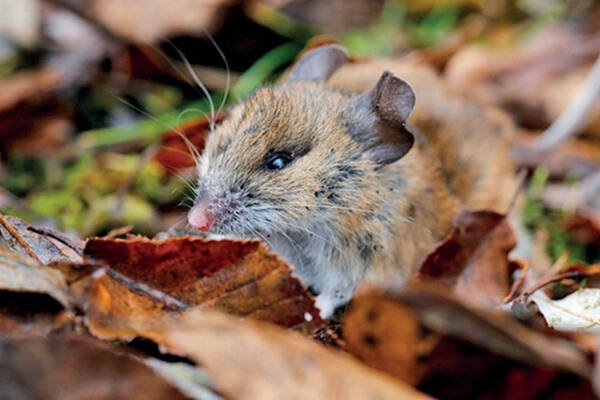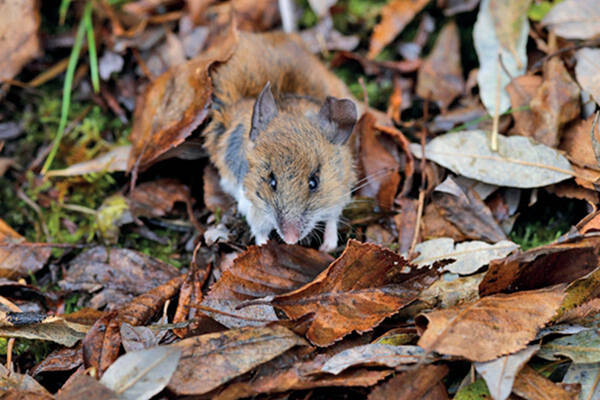Apodemus draco
IUCN
LCBasic Information
Scientific classification
- name:Apodemus draco
- Scientific Name:Apodemus draco,Apodemus draco draco,Apodemus draco orestes,Apodemus draco semotus,Forest mouse, mountain mouse, dragon mouse
- Outline:Rodents
- Family:Rodentia Muridae Apodemus
Vital signs
- length:80~160mm
- Weight:
- lifetime:
Feature
It is very similar to the black-striped field mouse, but has no black stripes on the back, its tail is usually slightly longer than its body length, and its ear shell is slightly larger and thinner than that of the black-striped field mouse.
Distribution and Habitat
It is endemic to China. It is distributed in Sichuan, Chongqing, Guizhou, Shaanxi, Shanxi, Gansu, Qinghai, Fujian, etc.
The Chinese field mouse mainly lives in forests, tall secondary forests, and densely vegetated areas.
Appearance
Individuals are medium in size, averaging about 90mm. The color of the back of the body is gray, and some of the back of the body are painted with light yellowish brown. The abdomen is light in color, off-white. The tail length is longer than the body length, which is 105%-125% of the body length. The ears are larger, 16-19mm. The tail is two-color, with black and gray on the back, light color on the belly, and slightly longer hair on the tip of the tail. The back of the front and rear feet is grayish white, some individuals are more white, and some individuals are brown. The claws are milky white and translucent, and a gray-black area can be seen in the base of the claws. The supraorbital ridge is obvious on the skull, especially in older individuals. There are 3 odontoid processes on the inside of the 3rd upper molar.
Details
Apodemus chinensis belongs to the Murinae subfamily. Also known as Apodemus chinensis, the species status of this species is stable. There were many subspecies in the past, including the current Apodemus taiwanensis and Apodemus lancangjiangensis. After the independence of Apodemus taiwanensis and Apodemus lancangjiangensis through molecular systematic evidence, Apodemus chinensis also includes 2 subspecies. The dividing line between the 2 subspecies is the Yangtze River. Now it seems that whether the 2 subspecies are established still needs further research. Apodemus chinensis has a wide distribution altitude span, from 800-3500m. It is a major member of the forest ecosystem, and is occasionally distributed in shrubs and farmland ecosystems.

Apodemus chinensis is a small and medium-sized rodent, which is the dominant rodent species in the forest area. Its number increases with the increase of altitude. In the Huangshan Mountains, in the woods and shrubs at the foot of the mountain, Apodemus chinensis accounts for 1.42% of the rodent species; in the evergreen broad-leaved forest, Apodemus chinensis accounts for 4.5% of the rodent species; in the coniferous and broad-leaved mixed forest, Apodemus chinensis accounts for 15.4% of the rodent species; in the deciduous broad-leaved forest, Apodemus chinensis accounts for 34% of the species. In Qingfengling, Huoshan County, Dabie Mountain (about 1,000 meters above sea level), Apodemus acutus accounts for 43.2% of the mouse species.
The burrows of Apodemus acutus are mostly under tree roots, in rock crevices or tree holes. The entrance is 3.0 cm in diameter, and there are two exits, each with a diameter of 2.5 cm. The entrance and exit are 35 cm apart from the ground. The tunnel is close to the tree roots and is extremely difficult to dig. There are not many branches in the tunnel. The nest is 45 cm away from the entrance. The nest is made of leaves and hay, and there is no food stored in the cave.
The Chinese field mouse mainly feeds on plant-based foods, such as acorns, tea seeds, chestnuts, grass seeds, young branches and leaves, and occasionally insects.
The breeding season is from April to November, [8] with the peak breeding season in late spring and early autumn. The gestation period is 26 to 28 days. The mouse breeds 2 to 3 times a year, with a minimum of 3 and a maximum of 10 pups per litter, with an average of 5 to 7 pups.

Apodemus chinensis is one of the main species of mice in the forest areas of southern Anhui and Dabie Mountain. It is harmful to forestry and is one of the sources of leptospirosis in southeastern Tibet. It is also one of the sources of tularemia in China. It harms crop seeds and seedlings, and also eats forest fruits and young seedlings, affecting forest renewal. Prevention and control must be strengthened.
(This species is listed in the 2013 IUCN Red List of Endangered Species Ver3.1—Vulnerable (VU).
It has been included in the "National List of Terrestrial Wildlife with Important Economic and Scientific Research Value" issued by the State Forestry Administration of China on August 1, 2000.








